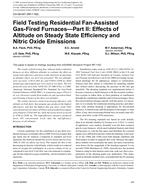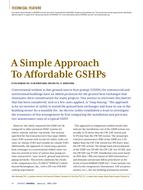A full-scale house model was constructed in an artificial climate chamber, where cylinders were installed for simulating airflow paths, including cracks in the external and internal walls. The flow rate through the cylinders was determined by measuring the pressure difference across them. Ventilation behavior due to internal-external temperature difference, i.e., ventilation induced by buoyancy or stack pressure, was observed without using tracer gas. Parameters such as airtightness of the envelope, airflow resistance through the internal walls, which partly depended upon the operation (open or closed) of doors, and internal-external temperature difference were varied in a series of tests. After verifying good agreement between calculated values and measurements of the air change rate and pressure difference across the envelope, the air change rate was determined at an inside temperature of 20°C with internal-external temperature differences of 10 K, 20 K, and 30 K, when the reference pressure difference (DeltaPref) is 9.8 Pa and the reciprocal number (n) of the exponential factor of internal-external pressure difference (DeltaP) is 2. The air change rate was also calculated at various values of DeltaPref and n to enable prediction of the buoyancy-driven air change rate.
Units: SI
Citation: ASHRAE Transactions, 1998, Vol 104, pt. 1A, San Francisco
Product Details
- Published:
- 1998
- Number of Pages:
- 15
- File Size:
- 1 file , 1.3 MB
- Product Code(s):
- D-7817


